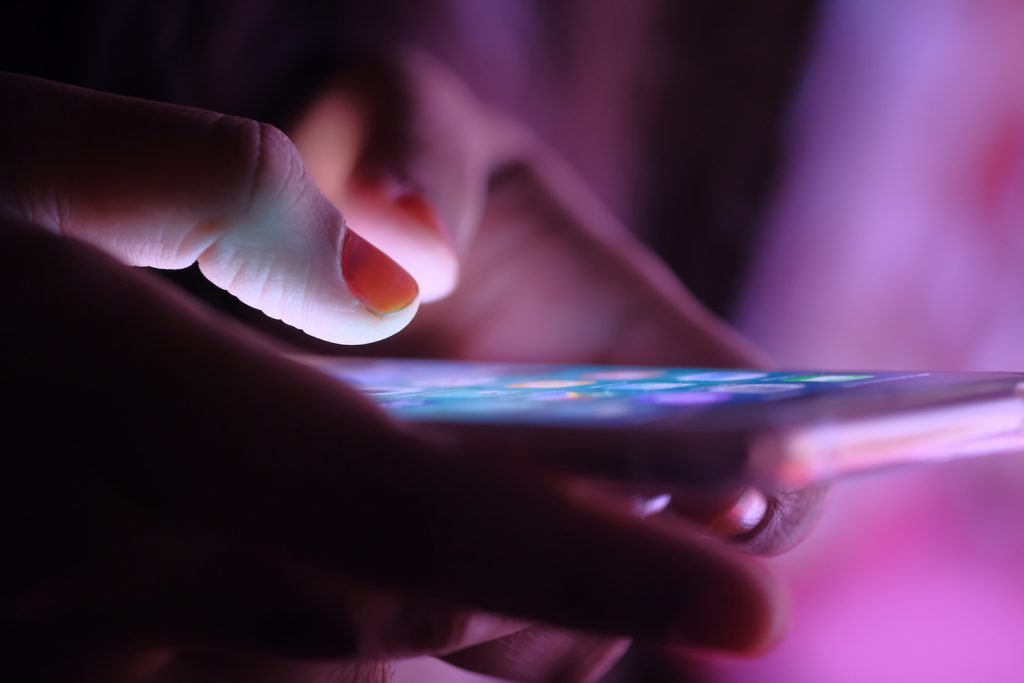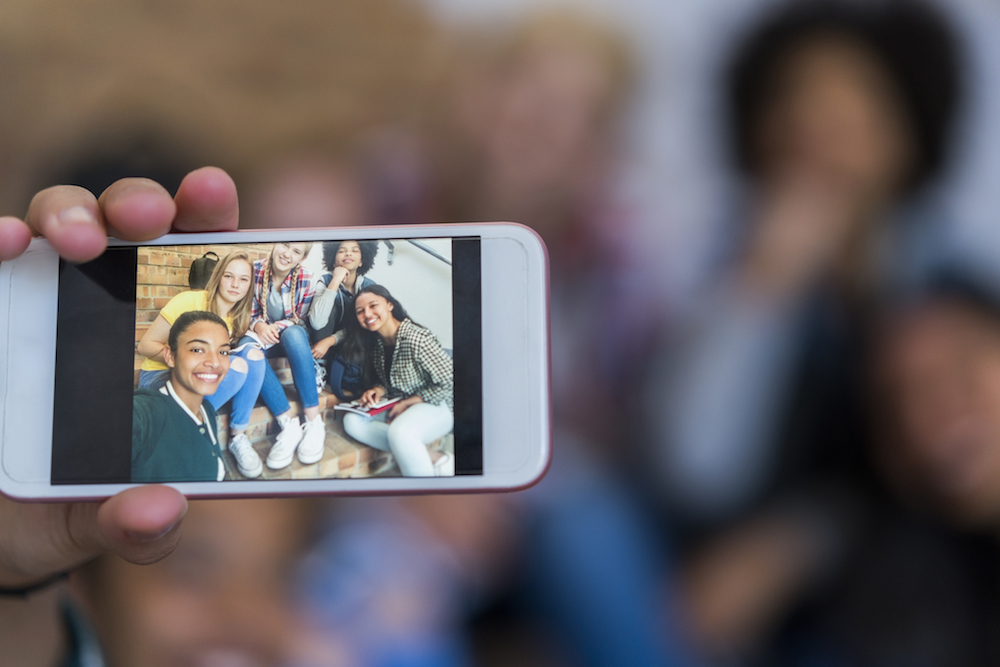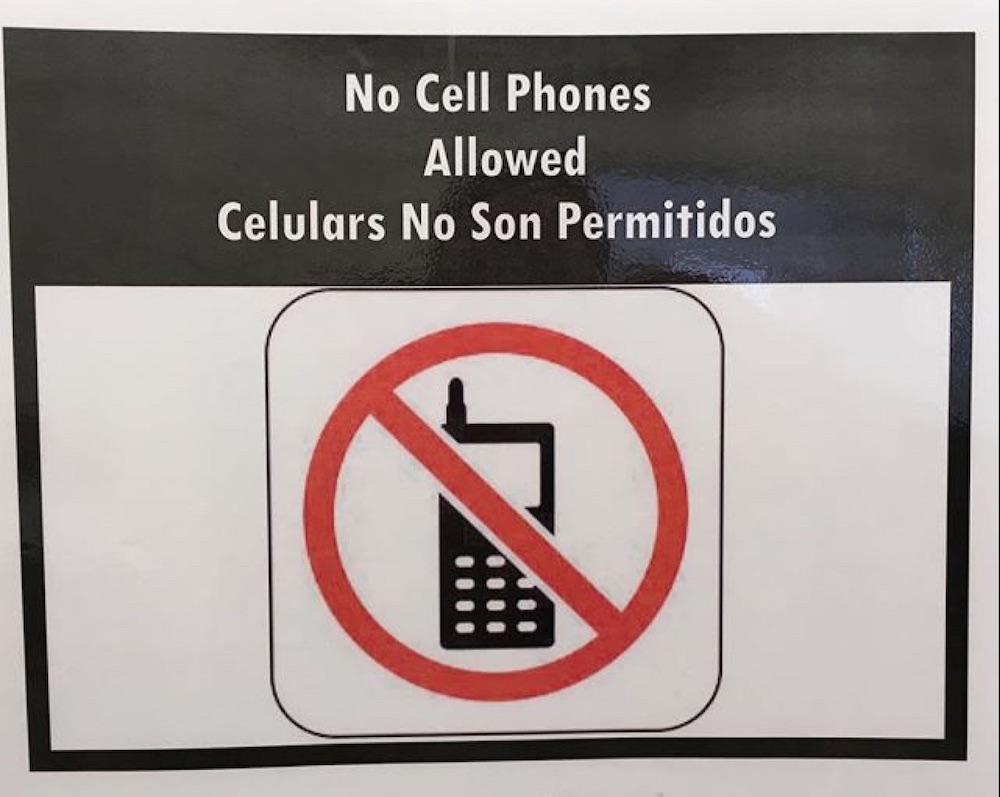How Cellphones Make and Break Human Connections

Cellphones have come to occupy increasingly important roles in everyone’s lives, from the bedroom to the supermarket, the classroom to the car. People use these hand-held computers for all manner of tasks and feel acutely anxious when they don’t work. Sometimes, when facing a forced separation, they hear phantom ringing or experience mental anguish.
One teenager in Washington, D.C., told us that losing her phone was like getting laryngitis; another compared it to breaking a leg. As another girl remarked, describing horrified reactions to her cracked cellphone screen: “It’s like they think I lost a family member.”
Our phones have become a critical part of what makes us us.
As anthropologists seeing these shifts and experiencing them ourselves, in 2016, we began a comprehensive study of how these devices are impacting our lives—and, in particular, the lives of high school students, their parents, and teachers. So far, we have completed almost 160 “cellphone biography” interviews, 76 surveys, 19 lunchroom observations, 12 focus groups, and 36 classroom observations at three public schools in Washington, D.C.
Our work has revealed a deep ambivalence in people’s relationship with their cellphones, even while they are becoming an integral part of our everyday lives. The technology interacts in complex ways with our identities, and our relationships, through its various capabilities. Cellphones paradoxically are alleviating some socioeconomic divisions in society while also reinforcing others, and creating new forms of inequality. Our companionship with phones is complicated: We both love and hate them.
Anthropologists have come to understand technology—whether it be a stone ax, photography, or radio—as more than just a “thing” but rather an embodiment of shifting relationships between people and ideas. Users of new technologies have long both celebrated them and feared the changes they bring. For cellphones, that change has been profound and fast.
In the internet’s early days, some scholars viewed it as a liberating place where people could explore all sorts of possibilities. These days, many pundits are jubilant about 5G, a new cellular technology that allows for a higher capacity of data transfer at higher speeds. But the ability of this intersecting set of technologies to connect everyone is complicated.
Some social scientists have taken a very dim view of cellphone technologies. In 2011, sociologist Sherry Turkle argued that cellphones render us “alone in a crowd.” In 2017, psychologist Jean M. Twenge made dire pronouncements about the younger “i-generation” being more distracted and less empathetic. The 2020 documentary The Social Dilemma promoted a dystopian view of these technologies from the perspective of social media system designers.
While these pronouncements appeal to recurring suspicions about technology, the work often emerges out of a distinct ideology that assumes face-to-face interaction is the ideal mode of communication. What this work sometimes fails to recognize is how cellphones and social media provide users with new ways to engage and be with one another. One can be simultaneously not engaged with one’s immediate neighbors but deeply engaged with people farther afield.
There have been plenty of surveys about phone use patterns, especially in the United States. (The Pew Research Center is mapping out broad trends in mobile phone use; the Stanford Screenomics Lab collects big datasets on clicks.) Such methods produce useful data, but are ill-suited to capturing ambivalence: On a survey, it’s hard to get nuanced responses. Ethnography gets more to the heart of people’s feelings and actions.
In the 2017 book Mobile Secrets, for example, ethnographer Julie Soleil Archambault shows how women in the city of Inhambane, Mozambique, use cellphones to redefine intimacy and elude parental authority. The 2019 book Phone & Spear by the arts collective Miyarrka Media shows how the cellphone has given the Yolngu people of Arnhem Land, Australia, new ways to express their traditional totemic affiliations through dazzling digital montages.
These stories play against skeptics who see these new technologies as driving the decline of local cultures. They also resonate with our research of high schoolers in Washington, D.C.
In our work, teenager Maggie Hankins railed against stereotypically negative views, as she expressed in a video about her internship at the Smithsonian Institution’s National Museum of Natural History, where she helped elicit feedback for an exhibit, Cellphones: Unseen Connections (curated by co-author Bell), about the global ecology, infrastructure, and cross-cultural usage of cellphones.
Dystopic views “aren’t true to my experience with my phone,” she said. “I use it when I’m exhausted and stressed from school and work. I go from texting a friend in Bulgaria about how she is, to wishing another friend happy birthday, to looking up the hours for that Pad Thai place I love so much.”
“Cellphones are personal. Whether you hate your phone or love your phone or are confused by your phone, you feel things about your phone,” Maggie said. “And as weird as it is to say, you feel things toward your phone.”
Helen’s parents removed her bedroom door in response to what they felt was her excessive cellphone use.
Cellphones have reshaped the scale and scope of our communication, a process that challenges what we are used to and what we are willing to tolerate—including our notions of privacy and our capacity to tolerate its violation. This tolerance is different from person to person, and generation to generation.
Take, for example, the experiences of 15-year-old Helen (a pseudonym), a student in a D.C. school who we interviewed back in 2016. Her school is a place of considerable flexibility, and phones are allowed in many classes and in the hallways. At home, though, Helen’s parents removed her bedroom door in response to what they felt was her excessive cellphone use, in part because her mother felt disconnected from Helen’s world.
While Helen felt violated by her mother’s punishment, she also resented the power that the cellphone had over her. She wanted the door back on her room and the autonomy to do what she wanted, but she also wanted to be free from the pressure to respond to social media at all hours.
Helen’s near-constant phone use resulted, she said, from FOMO (fear of missing out). This gave her a preoccupation, for example, with maintaining her Snapchat streaks, which record the unbroken number of days she has communicated with a friend. The resulting feeling of accountability to her friends’ technologically mediated demands often conflicted with her feeling of accountability to her mother’s world of face-to-face responsibilities.
It has generally been accepted that humanity should strive to diminish “the digital divide”—any division between people who have access to communication tech and those who don’t. That usually means making sure everyone has access to the internet.
Our ethnographic work, however, has highlighted some unexpected ways that digital devices are entrenching social divides. While practically everyone in our studies had access to cellphones and the internet, these technologies interacted with other socioeconomic problems in ways that widened divisions between communities.
For example, in our study, we noticed that while almost all the students in our D.C. study had phones, only some had laptops. In general, even the low-income students in our study had access to the internet, but their primary device was unsuited for what they were trying to do: Writing an essay on a phone often just doesn’t work.
In addition, the schools in our study that served lower-income students were far more restrictive about phone use, while the richer and more privileged schools were more permissive. While the most elite magnet school in D.C. emphasized individual student responsibility in using cellphones and allowed students to use them between classes, for example, the lowest-income school in our study disabled phones at the beginning of the day and only unlocked them when classes were over.
The principal in the latter school explained, “These kids are coming to school from a space of trauma”—by which he meant high rates of trouble with police, substance abuse, domestic violence, and poverty. While the elite school assumed their kids could handle whatever pressures and problems might result from phone use, the lower-income school took what they saw as a position of care and responsibility for their more vulnerable population of students. While the policies were well-meaning, they could serve to create a new divide between rich and poor students.
How can humanity learn to coexist with and through these devices?
It is not as though we have never experienced such tensions before. Indeed, societies have been ambivalent about new technology all the way back to the printing press, which people both praised for disseminating information and feared for destroying authority and control over that information. People have debated the pros and cons of technologies such as railway trains, cars, radio and television, traditional phones, and Walkmen. Each was seen as both a liberator and a destroyer.
If history has any lesson to teach us about moral panics over technology, it is that they usually don’t pan out. But we should be aware of both the good and the bad as we navigate into the future.
As seductive as dystopian and utopian views of technology are, we need to resist them. Instead, we need to lean into one of the hallmarks of anthropology and do what ethnography does at its best: seek to understand the lived realities of technology. As we have found, this means taking ambivalence seriously.




































